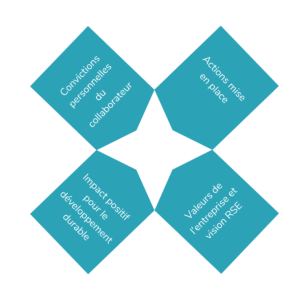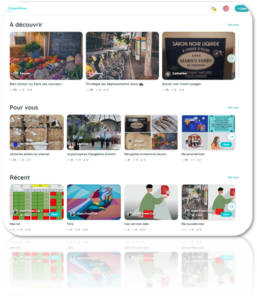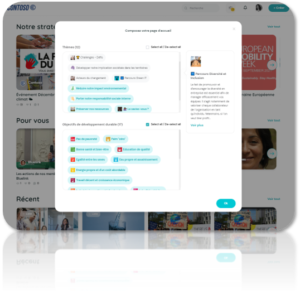Solidarity actions: how to engage employees over the long term?
Let’s talk about mobilization. Once the sustainable development strategy and CSR have been defined within the company, it is time to take action. Some things can be done directly at the level of the company and the COMEX or CODIR. Others can be done through the mobilization of your teams and employees via a collaborative CSR tool. So, how do you make your teams understand your challenges? How do you make each action last so that the impact is positive in the long term? How can you capitalize on the actions of each person? How to inspire and make people want to get involved? The CitizenWave team tells you everything.
What is a solidarity action?
Definition of a solidarity action
Let’s start at the beginning. The definition.
A solidarity action consists in bringing an individual or personal action within a group, with the objective of defending a precise interest. In other words, it is a collective action. In most cases, this is done through a public interest association. For a long time, this subject was left aside in companies, whereas it was omnipresent in the private sphere. Today, things are changing. As a company, it is possible to initiate this virtuous circle.

More concretely, your employees commit to a cause that is close to their hearts, according to the level of involvement they wish to have. As a company, you support them in this process and thus encourage the advancement of certain causes.
4 key themes of solidarity action
- Education: This involves many areas (education of young people from disadvantaged backgrounds, education in developing countries, etc.).
Social action: This theme has been widely publicized thanks to the work of the Resto du Cœur and the Fondation Abbé Pierre. It can be, for example, to provide meals to the most destitute, to fight against isolation or to find decent housing.
The environment: The subject is also very broad (protection of biodiversity, renewable energies, protection of the oceans, protection of forests, etc…).
Integration and employment: The idea here is to enable everyone to live an integrated life in society (for disabled people, people from minorities, the long-term unemployed, etc.).
3 formats of solidarity actions in companies
- One-time volunteering
Volunteering is a simple, quick and efficient way to set up.
It consists in proposing to your employees to give :
Time (collect waste, participate in a marauding, etc. …)
Skills (English training, writing a CV, etc.).
These actions can be both punctual and more permanent with recurring meetings. This format is widely appreciated by employees.
The advantage of a collaborative CSR tool: You can relay each action of this type to all employees (or simply to those who are most sensitive to it), share a calendar of upcoming events, promote employees who have initiated the process, facilitate contact between people interested in the same subjects, and much more.

Financial donations
As the name suggests, the idea here is to offer your employees the opportunity to donate not their time or skills but money. This can be done through different formats:
A donation of time off (sick child, caregiver, etc…)
One-time collections (clothing, games, school supplies, etc.)
Rounding up your salary (which has the advantage of being active every month)

The advantage of a collaborative CSR tool: You can create a section dedicated to the subject on the tool and thus allow each employee to fully understand the stakes and benefits. By transmitting information, you allow employees to embody the subject and thus encourage initiative-taking and the emergence of ambassadors. They can then use the tool to launch actions, plan collections, and raise awareness.
Long-term sponsorship of skills
This option is more complex to set up but its impact is also much more important. It consists of allowing employees who request it to be seconded for a certain period of time (usually 1 to 2 years) to use their skills for a cause. The company continues to pay an income, the employee works for the cause he or she has chosen. It’s a bit like providing a service or lending a hand. This format is very popular, especially at the end of a career.
The advantage of a collaborative CSR tool: You can, for example, highlight in a section the various employees who are involved in sponsorship, and explain the system. This can also allow employees to become ambassadors and get involved. They can share their experience, suggest content, and propose webinars on the subject.
How to choose solidarity actions in line with your CSR strategy?
The proposed solidarity actions must be in line with your values, your approach in terms of sustainable development and your long-term vision. They must also allow you to mobilize your teams and therefore be consistent with their desires. To ensure that you propose coherent missions, there are two steps:
Frame the subject: Do some research beforehand and define a list of possible actions and causes to support (Surfrider Foundation, WWF, Sea Shepherd, etc…). You will then have all the keys to start the topic.
Present the information to your teams: At this stage, it is important to present the different options and make your employees want to get involved. The easiest and most effective way to do this is through your collaborative CSR tool.
Let your employees choose: Set up an interactive format to select the causes or commitment formats that most appeal to your employees (survey, quiz, etc.).


Leave a Reply